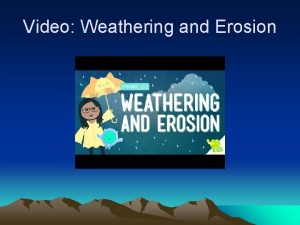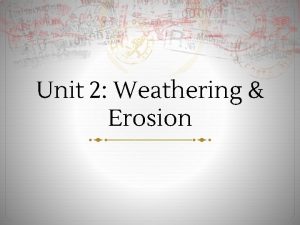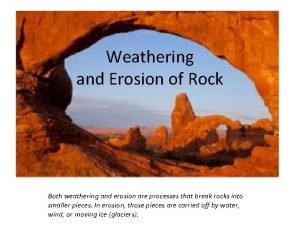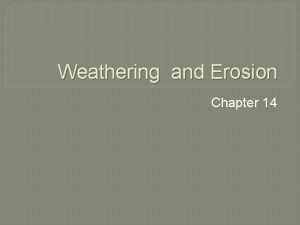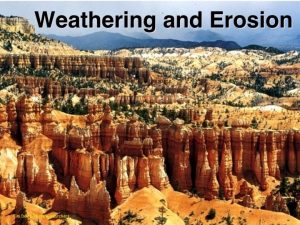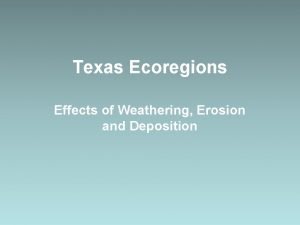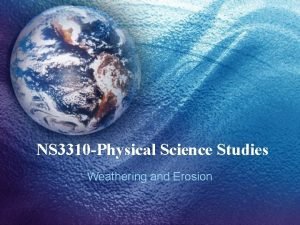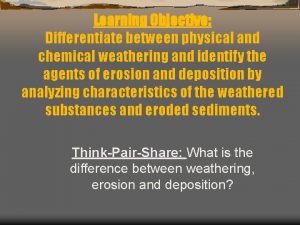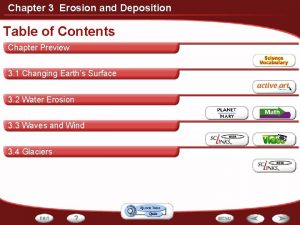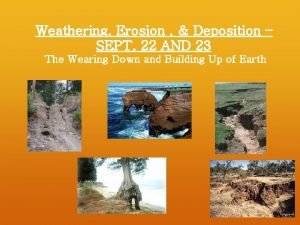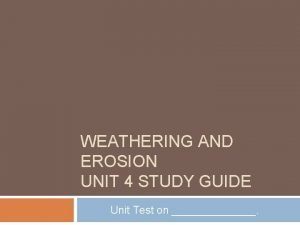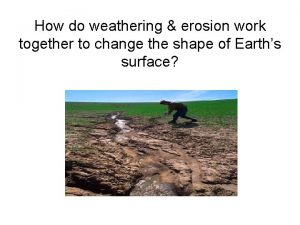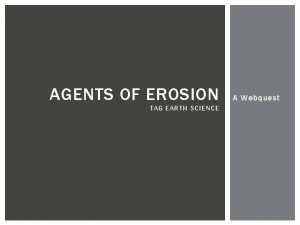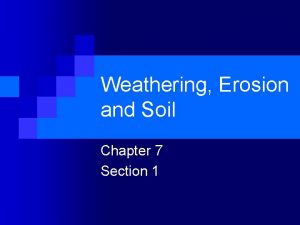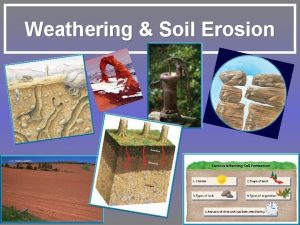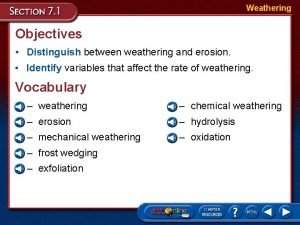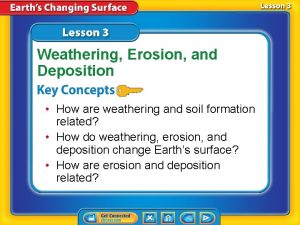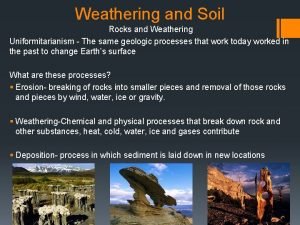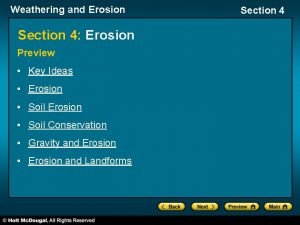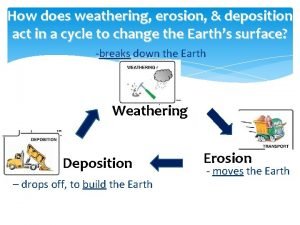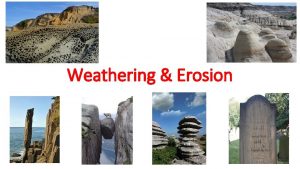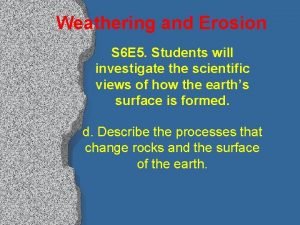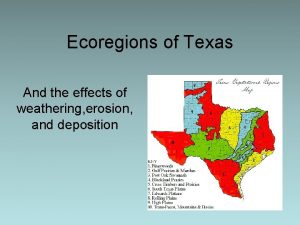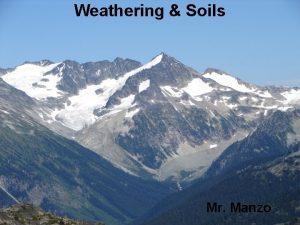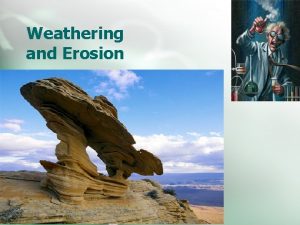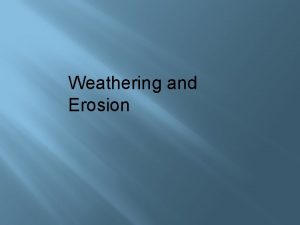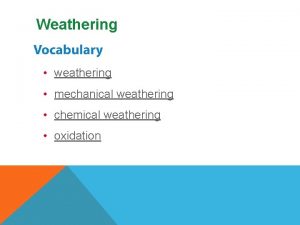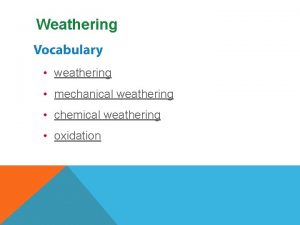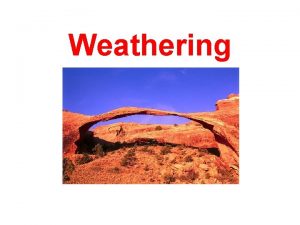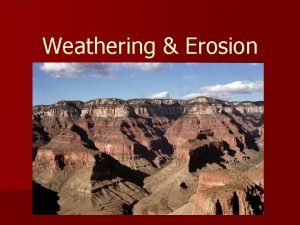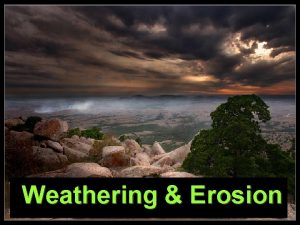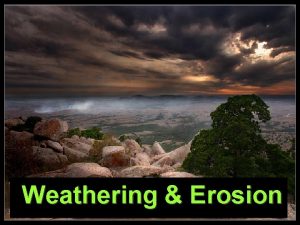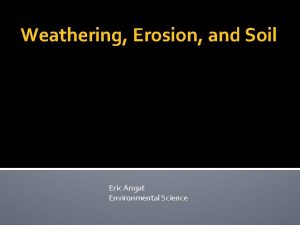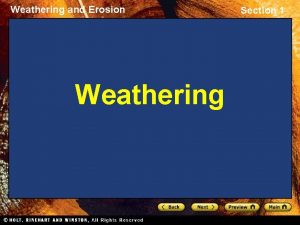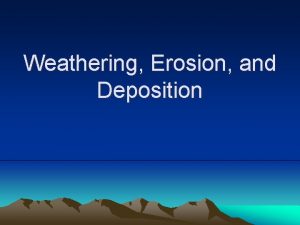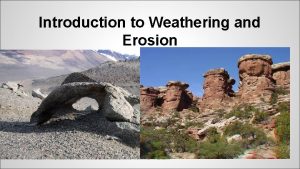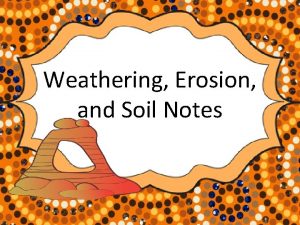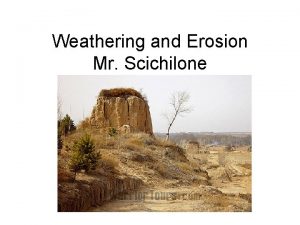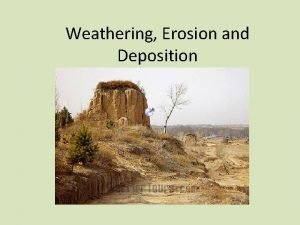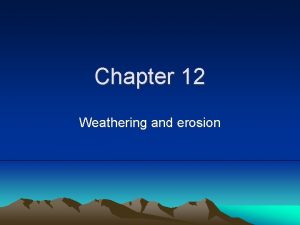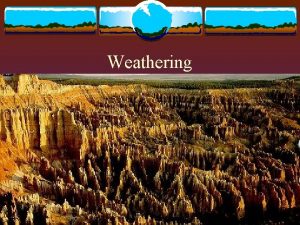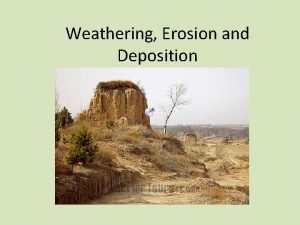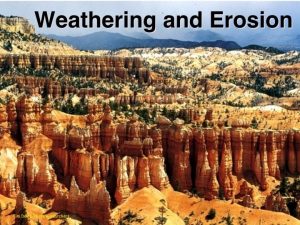Weathering and Erosion Video Questions Answers Eric Angat































- Slides: 31

Weathering and Erosion Video Questions &Answers Eric Angat Teacher

Weathering and Erosion

1. Why is the Yosemite valley shaped like a half dome? Was it a whole dome before? What changed it? Yosemite Valley was a whole dome shaped mountain before but weathering and erosion changed it into half dome. http: //www. nps. gov/yose/planyourvisit/halfdome. htm

2. What are landforms? Landform refers to the shape of the land like mountains and valleys. http: //ccs. clarityconnect. com/NRiggs/Landforms. html

3. What can instantly change the surface of Earth? Eruptions of volcanoes, earthquakes, and landslide can instantly change the shape of Earth.

4. What are the processes that slowly change the surface of Earth? Weathering and erosion

5. What is weathering? Weathering breaks rocks and turn them to sediments. http: //www. nps. gov/yose/planyourvisit/halfdome. htm

6. What are the causes or agents of weathering? Water, ice, wind, temperature, living things http: //www. nps. gov/yose/planyourvisit/halfdome. htm

7. Why is water considered as the most powerful agent of weathering? The physical forms and chemical properties of water can easily break rocks. http: //fphotoshelter. com/image/I 0000_fmfx. Y 9 uk. MU

8. How can water split rocks apart? ( freezing and thawing ) Frost wedging is the breaking of rock by the freezing of water. Water expands by 9% when it is frozen. http: //www. answers. com/Q/Where_does_frost_wedging_occur

9. Why are the rocks in stream smooth and rounded? Rocks in a stream roll because of the flowing water, this process makes them smooth and rounded. http: //motherhood. modernmom. com/putting-river-rocks-around-bushes 13761. html

10. How can acids affect rocks? Acid causes chemical weathering on rocks. Acids can dissolve the minerals in rocks thus breaking the rock. http: //imgarcade. com/1/carbonation-chemical-weathering/

11. How can plants break rocks? Plants are agents of weathering. Plant roots can grow in cracks in rocks making the cracks bigger and bigger until the rock breaks. http: //miftahulxiimm 1. blogspot. com/2012/10/power-exogenous. html

12. How can wind shape or break rocks? Wind is an agent of weathering and erosion. Wind can blow sediments towards rocks and shape them. http: //biocircuits. ucsd. edu/outreach/? p=714

13. How can temperature changes break rocks? Materials expand when heated and contracts when cooled. Rocks expand when it is warm and contract when it is cold. This expansion and contraction break rocks. http: //1 e-geography. blogspot. ca/

14. What happens to the broken rocks? Erosion happens when sediments are moved from one place to another.

15. What are the agents of erosion? Flowing water, wind, ice, and gravity are the agents of erosion.

16. What is creep and what causes it? A creep is the slow movement of land downhill. It is caused by gravity.

17. What is mudslide and what causes it? Mudslide happens when moving water erodes soil and mud down slope. It is caused by moving water and gravity.

Mudslide and landslide avalanche Lahar Rapid movement of rocks and sediments on a slope. Rapid movement of snow, ice, and rocks on a slope. Rapid movement of volcanic materials on a slope.

18. What is glacier and how does it shape the surface of Earth? Glacier is moving ice along a slope. As the ice moves it scrapes and transports rocks and soil.

19. What causes the ripples on sand dunes in deserts? Wind causes ripples on sand. Dunes are formed when the sand is deposited by the wind.

20. Why are people considered as agents of weathering and erosion? Human being break and move rocks and sediments to build structures.

21. What is terracing and how does it help farmers? Terracing is making steps on the sides of farmlands. This prevents the topsoil from being eroded.

22. What is weathering? Weathering breaks rocks into sediments

23. What is erosion? Erosion carries sediments away.

24. What is deposition? How does it form sand dunes and delta? Deposition is the dropping off of eroded rocks. Deposition form sand dunes in the desert and delta at the mouth of the river.

Define the following: Physical weathering Breaking rocks without changing their composition. Examples: frost wedging, rolling rocks due to gravity

Define the following: Chemical weathering Breaking rock due to decomposition, the composition of the rock changes. Example: acid breaking rocks

The chemical weathering of limestone, or carbonation, occurs when the rock is attacked by rainwater. The chemical equation for this process is Ca. CO 3+ H 2 CO 3 = Ca(HCO 3)2, Limestone + Carbonic acid (rainwater) = Calcium Bicarbonate (soluble limestone).

 Exfoliation definition weathering
Exfoliation definition weathering Weathering and erosion difference youtube video
Weathering and erosion difference youtube video Erosion video bill nye
Erosion video bill nye Mtpdp 2004-2010
Mtpdp 2004-2010 Chapter 14 weathering and erosion review answers
Chapter 14 weathering and erosion review answers Questions on weathering and erosion
Questions on weathering and erosion Chad lentz
Chad lentz Trans pecos weathering erosion and deposition
Trans pecos weathering erosion and deposition Difference between weathering and erosion
Difference between weathering and erosion Rain washing away soil from a hillside
Rain washing away soil from a hillside Edwards plateau weathering erosion deposition
Edwards plateau weathering erosion deposition Weathering erosion and deposition in texas ecoregions
Weathering erosion and deposition in texas ecoregions Get5gets
Get5gets Difference between weathering and erosion
Difference between weathering and erosion Weathering erosion and deposition
Weathering erosion and deposition Weathering and erosion
Weathering and erosion Weathering erosion
Weathering erosion What happens when weathering and erosion work together?
What happens when weathering and erosion work together? Weathering webquest
Weathering webquest Chapter 7 weathering erosion and soil
Chapter 7 weathering erosion and soil Soils in ____ contain little organic material and are thin.
Soils in ____ contain little organic material and are thin. Distinguish between weathering and erosion
Distinguish between weathering and erosion Weathering vs erosion
Weathering vs erosion How does temperature break down rocks
How does temperature break down rocks Types of soil erosion
Types of soil erosion Erosion and deposition
Erosion and deposition Weathering and erosion
Weathering and erosion Hydrolysis of feldspar
Hydrolysis of feldspar Deposition earth science
Deposition earth science Weathering vs erosion
Weathering vs erosion What are the ecoregions of texas
What are the ecoregions of texas Erosion and weathering
Erosion and weathering
